Teams have many main tactics to defend indirect free-kicks, but they change some roles and positions of specific players depending on many variables. The distance of the free-kick from the goal determines the defensive scheme. The defensive scheme for a near free-kick, which is closer to the goal, is different from the defensive scheme for a far free-kick, which is farther away from the goal. Moreover, the defensive structure depends on the location of the free-kick on the field, whether it is in the central area, in the outer flank, or half-spaces.
This tactical analysis will examine the specific challenges that confront the teams that defend against wide free-kicks in the outer corridor adjacent to the penalty area, which resemble corner kicks at a specific angle.
In many instances, one can observe teams that preserve the line system regardless of the situation, teams that make some adjustments and teams that transform the system entirely as if they were facing a corner kick. This analysis will elucidate the rationale behind these different approaches.
Liverpool case study
First, we have said that the defending scheme depends on many variables, but let’s explain Liverpool’s main system against wide free-kicks. They defend by a high line with seven players who drop late using the off-side trap and a player who stands in front of them blocking the runner who tries to get into the line with his pace to make it easier for the line to catch him when they start to drop, but he only reduces his pace and doesn’t track him to stay on the rebound zone.
They also use a player, highlighted in yellow, to stand between the line and the wall to close the direct path between the ball and the goal, and we will know the importance of that.
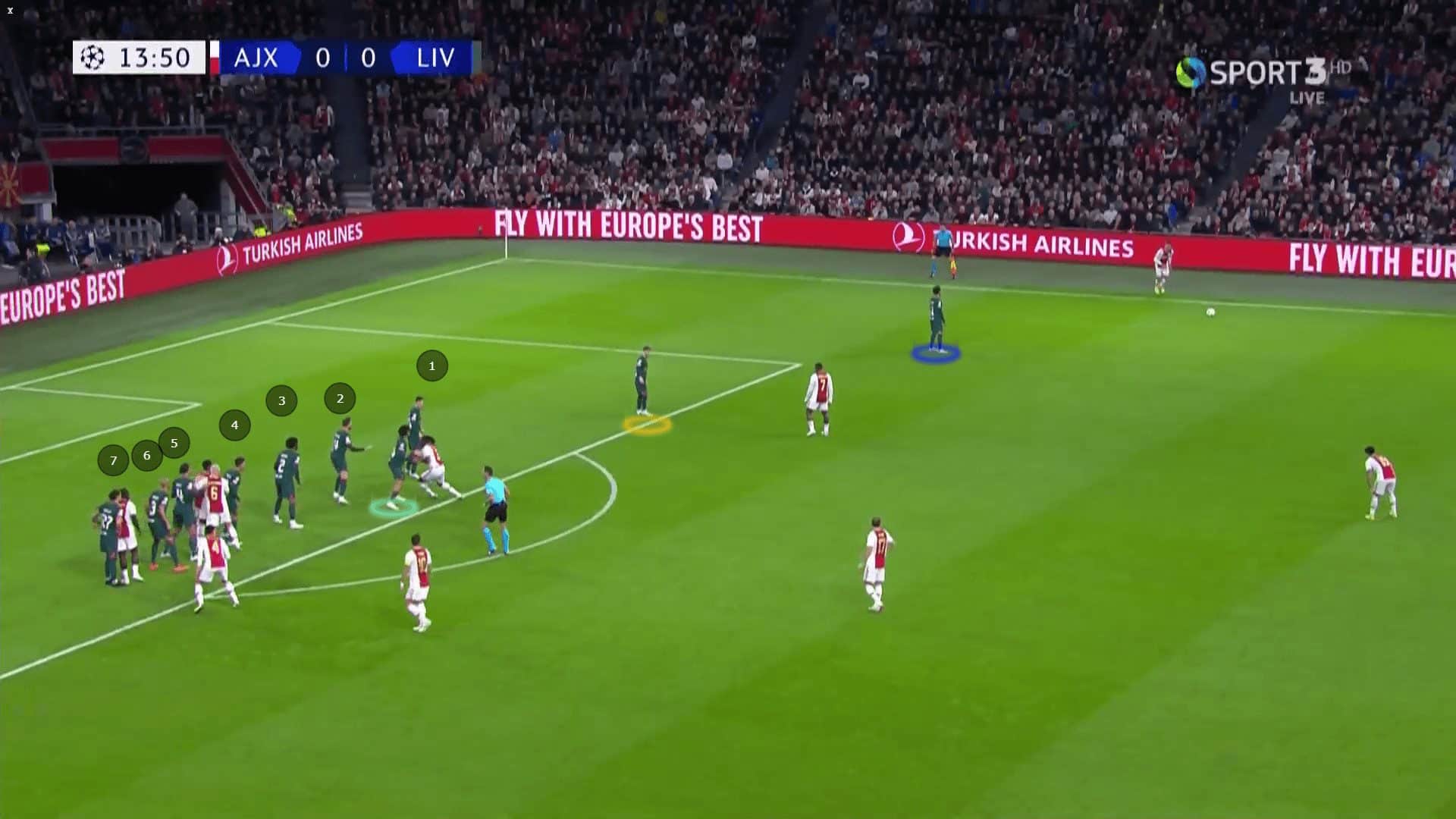
Now, let’s start to get into the process. Thus, we need to categorise these free kicks that we will analyse into two segments. The first segment is where the indirect free-kick occurs before the six-yard line, and the second is when it is parallel to the six-yard line. Let’s start with the first one, having a journey from the previous season to the current one.
In this kind of indirect free-kicks, Liverpool persisted with the same system, but as the free kick approached the goal, the demand for an isolated player to occupy the rebound zone, so they opted to eliminate the player who was positioned between the line and the wall. Here, the adversary took advantage of this gap between the wall and the line.
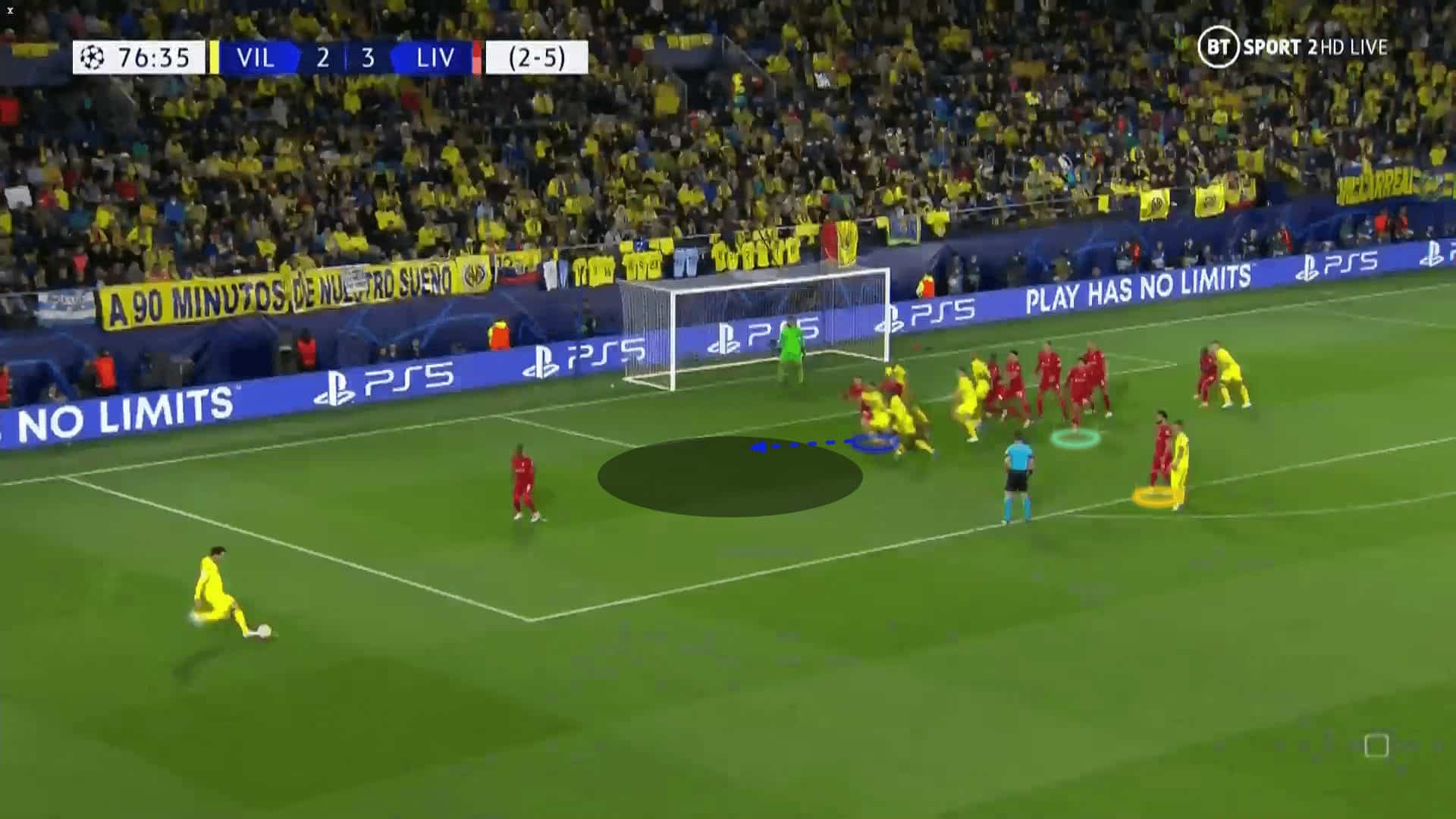
The opponent exploited this large, dangerous area, which made them close to scoring a goal, as shown in the following two photos below.
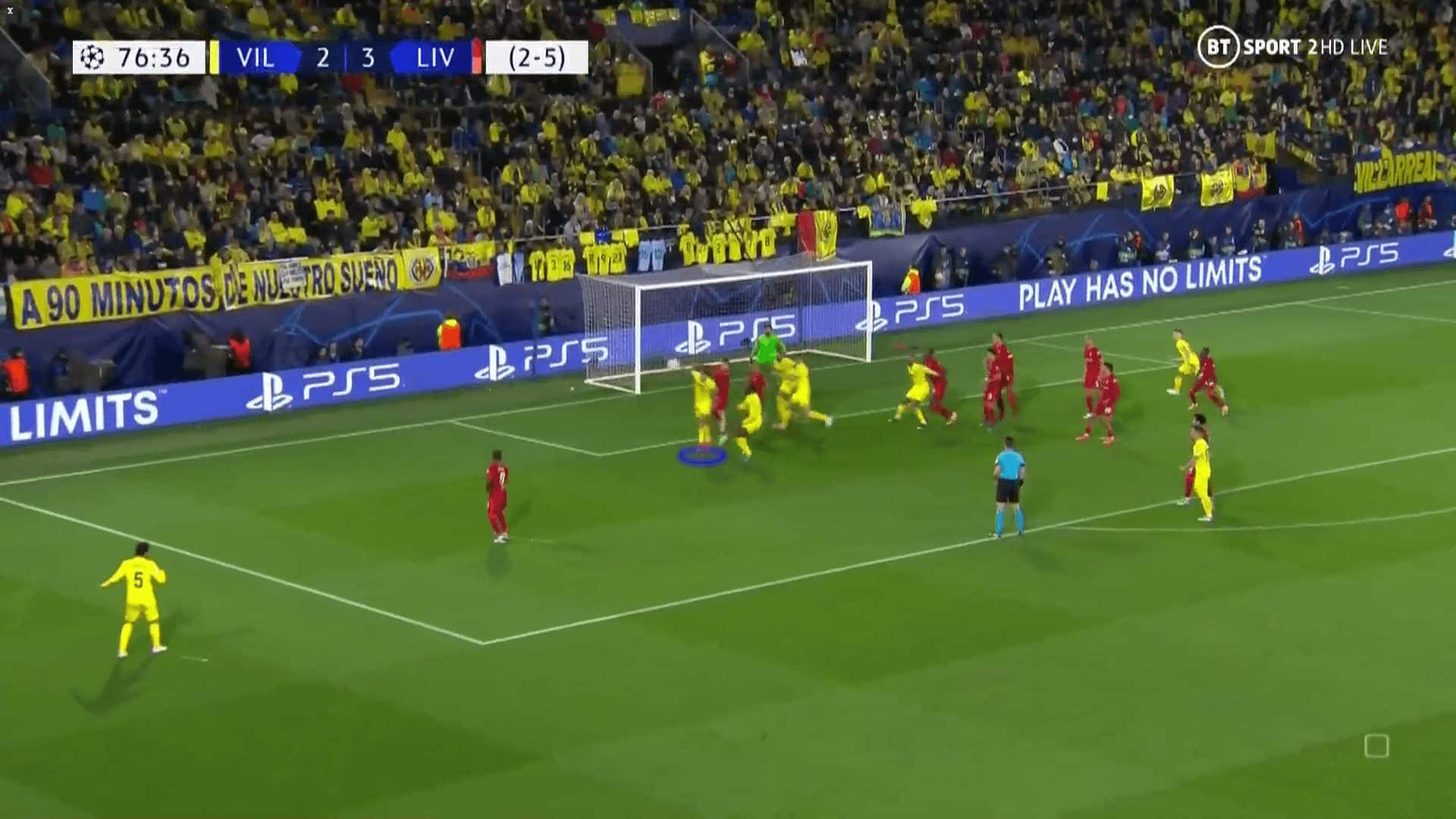
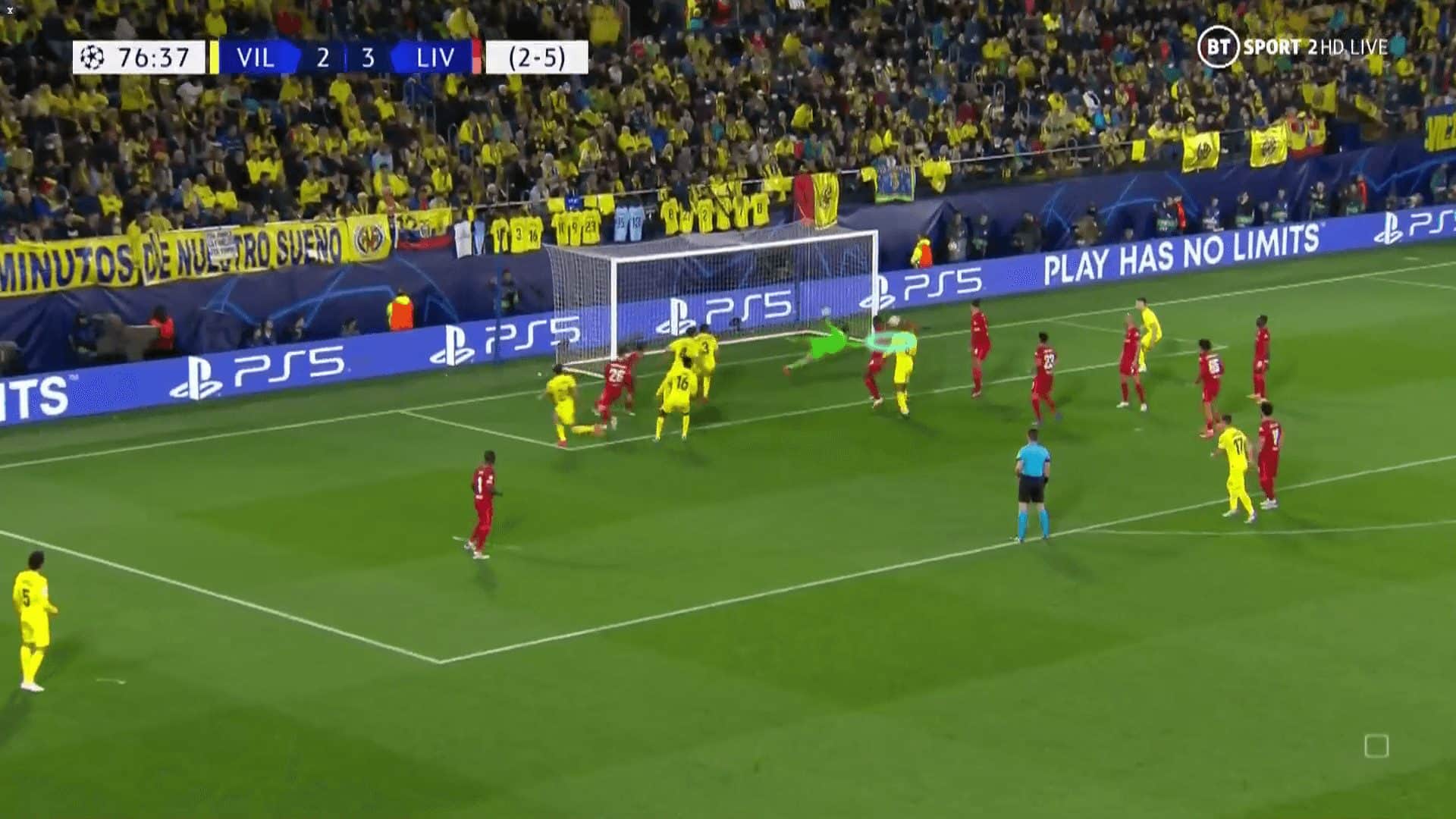
After that, Liverpool was forced to ask a player to stand in this position, leaving the rebound zone depending on the green-highlighted player to do two jobs: block the opponent’s runner and put his eyes on the rebound zone.
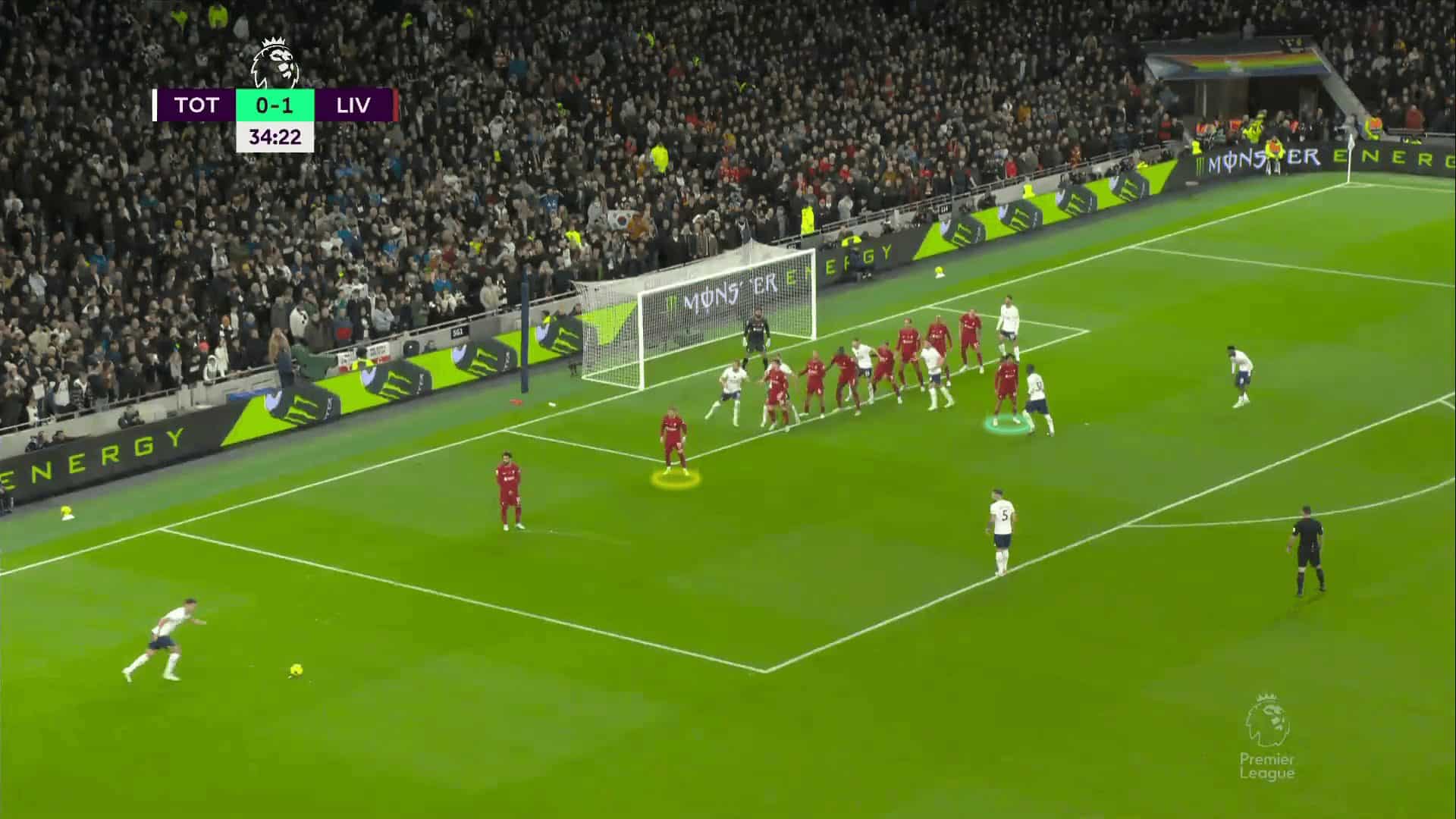
So when Tottenham tried to target this area like Villarreal CF in the previous case, they found a player highlighted in yellow.
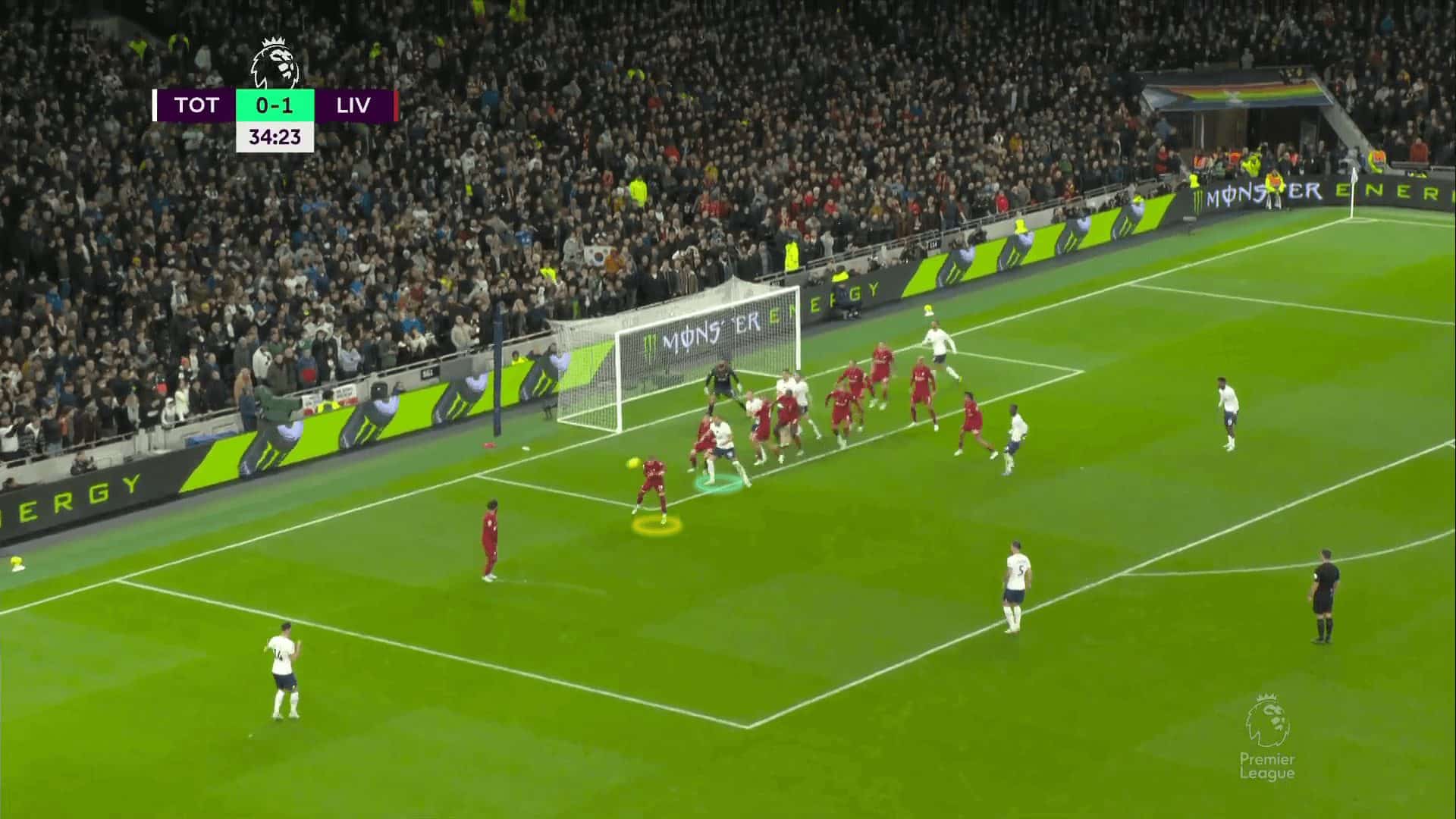
As it is widely known, the set pieces are comparable to any aspect of football, resembling a chess match, so it is expected to respond to your opponent. In Liverpool’s recent encounter with Manchester City, Liverpool faced a predicament where Man City deployed two players on the delivery of the free kick and two players on the rebound zone, so Liverpool had to advance this player slightly, especially since City is renowned for utilising the short passes in set pieces overall, whether the corner kicks or the free kicks, as in the first photo.
In the second photo, Man City exploits this gap by asking the taker to deliver a cross through this area to Erling Haaland, but the defender saves it at the last moment, so the ball goes above the crossbar, as shown in the third and fourth photos.
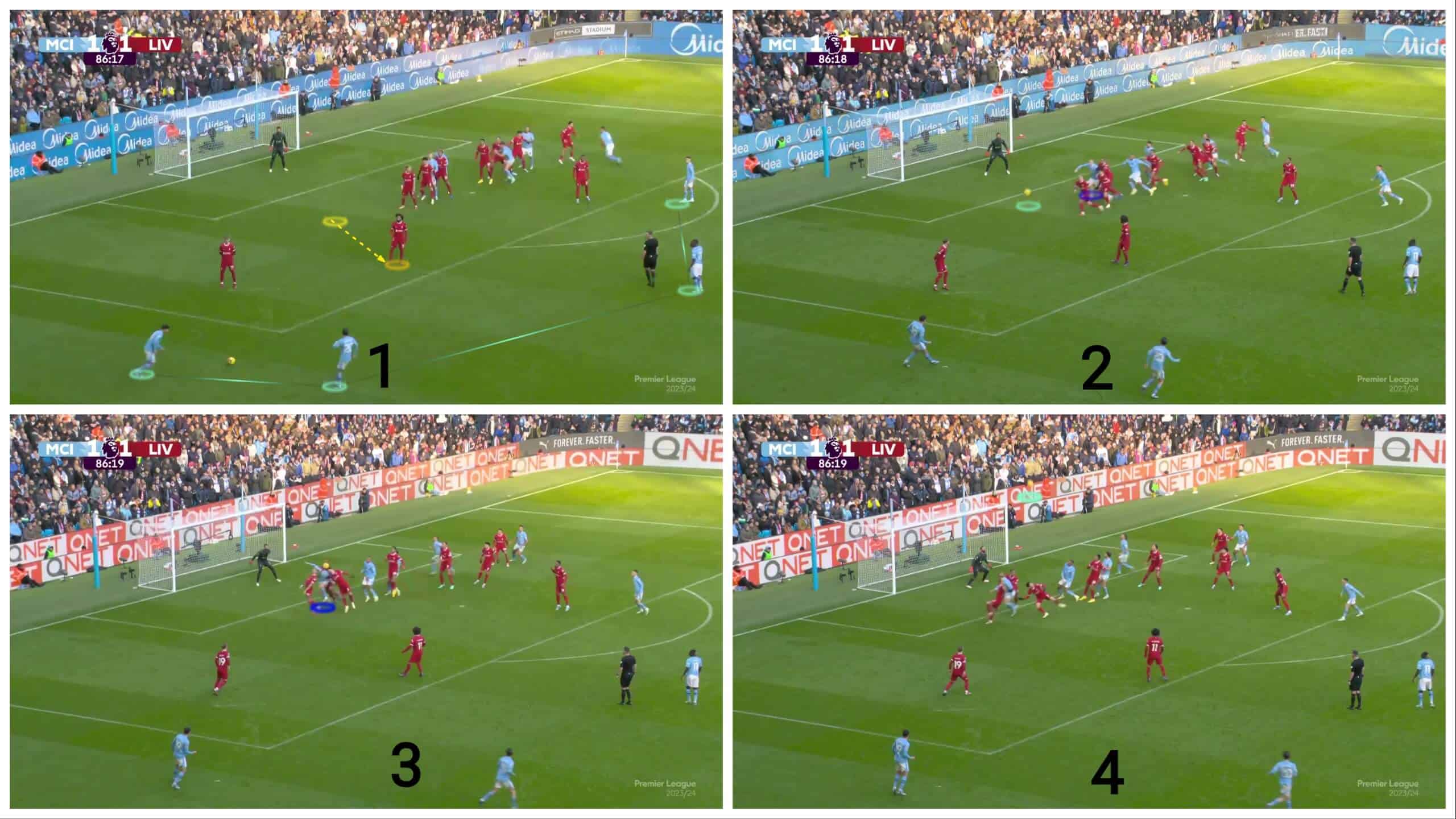
Now, we come to the second kind, when the free-kick is beside the six-yard zone, so the line is forced to stand inside the six-yard. We will take an example from Liverpool’s match against Real Madrid in the UEFA Champions League when Éder Militão scored a goal from a free-kick. One might recall the extent of indignation that many supporters expressed and blamed Trent Alexander-Arnold for conceding the goal.
In the first photo, it is shown that Liverpool is still committed to seven players in the line, leaving only a player against the short option and only a second-zone player to block runners while also playing the role of a rebound defender, so Arnold is the last zonal defender, not a man marker.
This causes a problem because when the free-kick becomes beside the six-yard, the area between the line and rebound zone becomes larger than the first kind. Therefore, it is easy to lure this player to the rebound area to create a large gap, as shown in the second photo.
In the second photo, Real Madrid’s plan is clear to make Karim Benzema take the attention of this lonely player. At the same time, Éder Militão comes from the far post suddenly to target this gap, and the result is an important goal, as shown in the third and fourth photos.
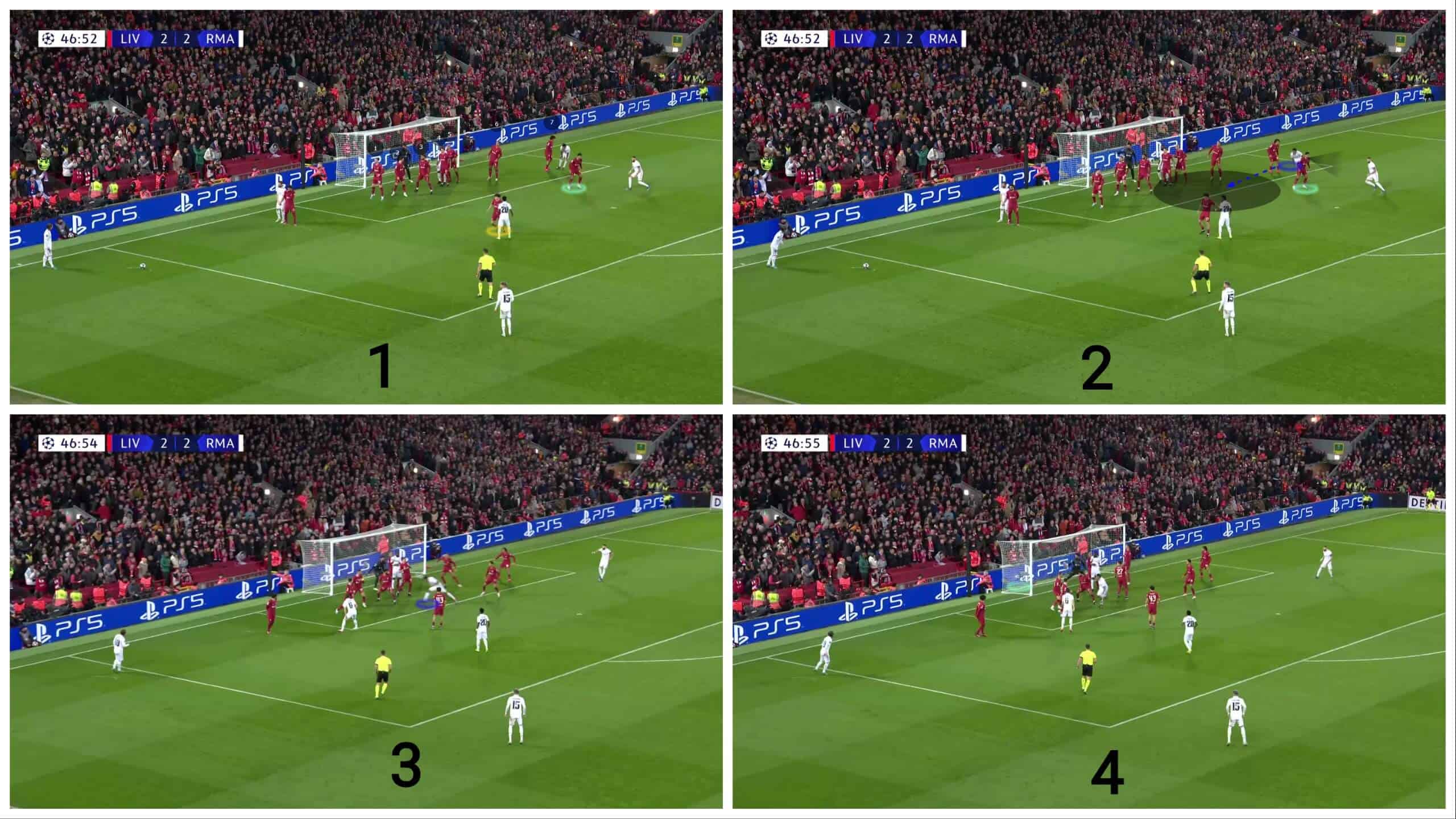
After that, Liverpool decided to act more like in corners, as shown below, by using a five-player line, which is more inclined to the outside because the taker is an outswinger in this case, a player in front of them to get the first touch, two second-zone players and a rebound player.
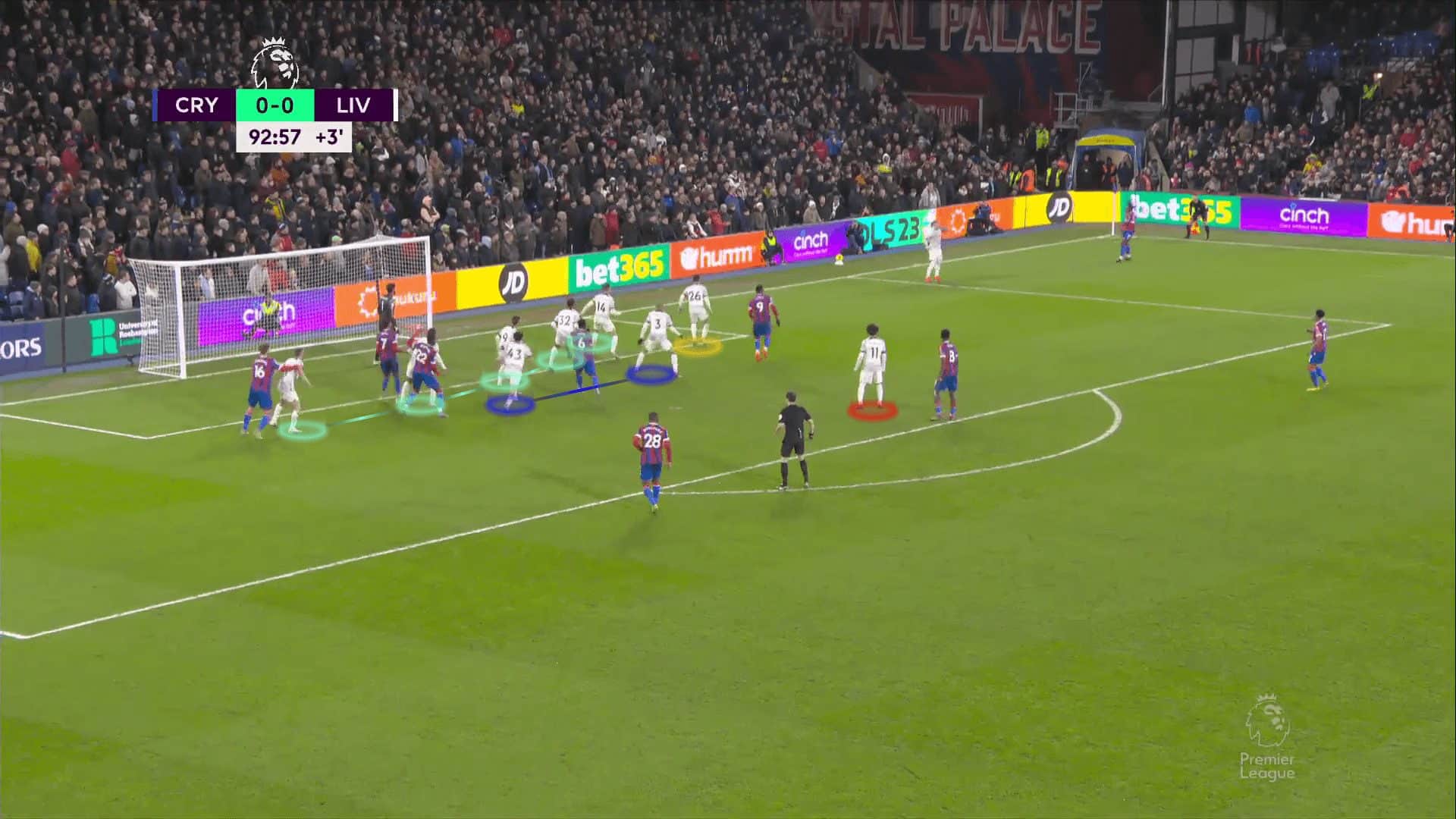
And like this against inswingers with a little difference in the line as in corners, but they dispensed with one of the two players who stand as a second zone defence line to make the wall from two players. These small things change from one opponent to another.
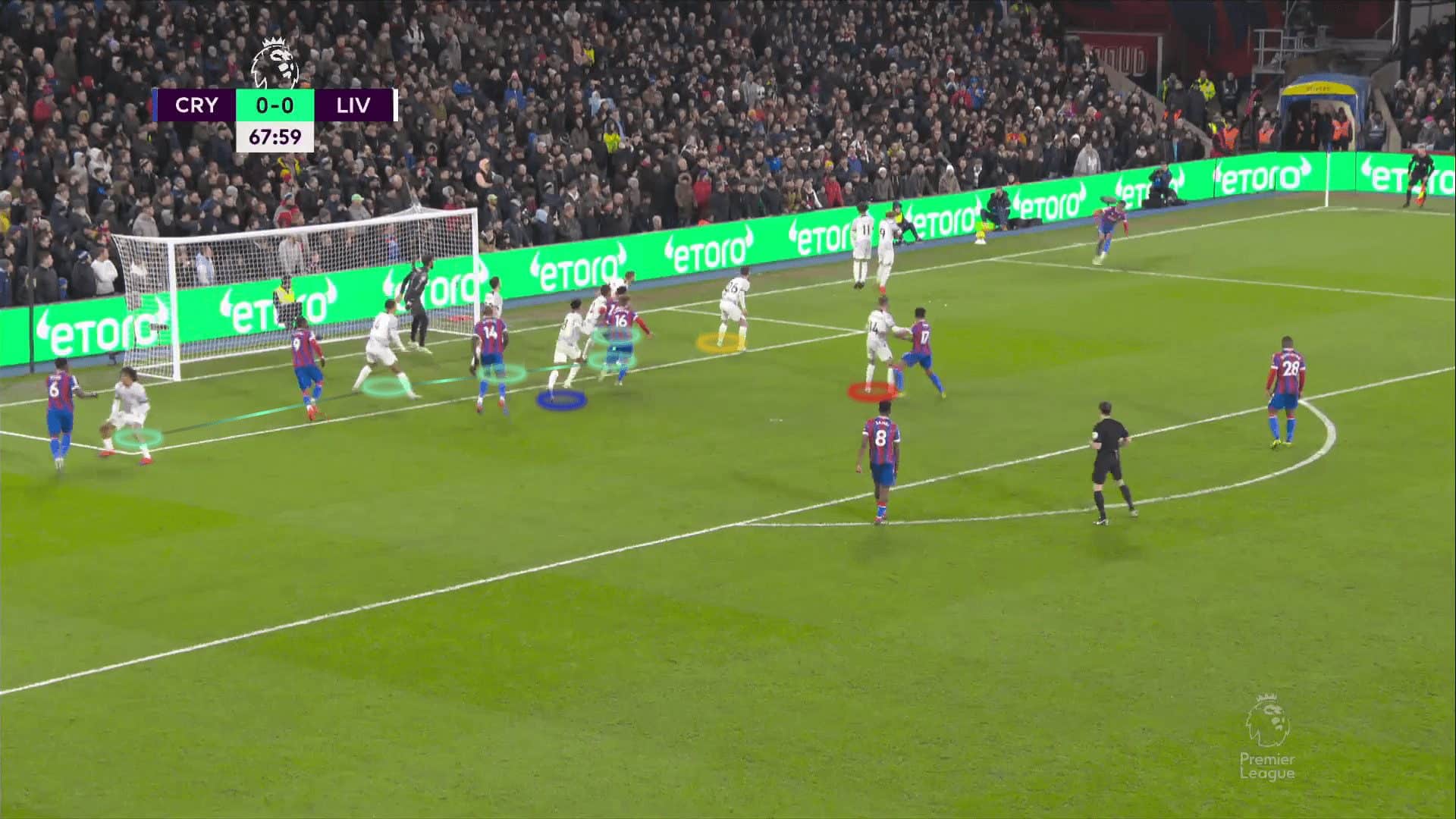
They also had another similar way by fixing the first zonal defender in the corner of the six-yard as in the previous one. Still, they asked the first five-player zonal line to get more inside the six-yard to defend the goal mouth well, putting the second zonal line on the six-yard line. These details may change from one opponent to another, but the same idea is to pay attention to the second defence line to fill this gap.
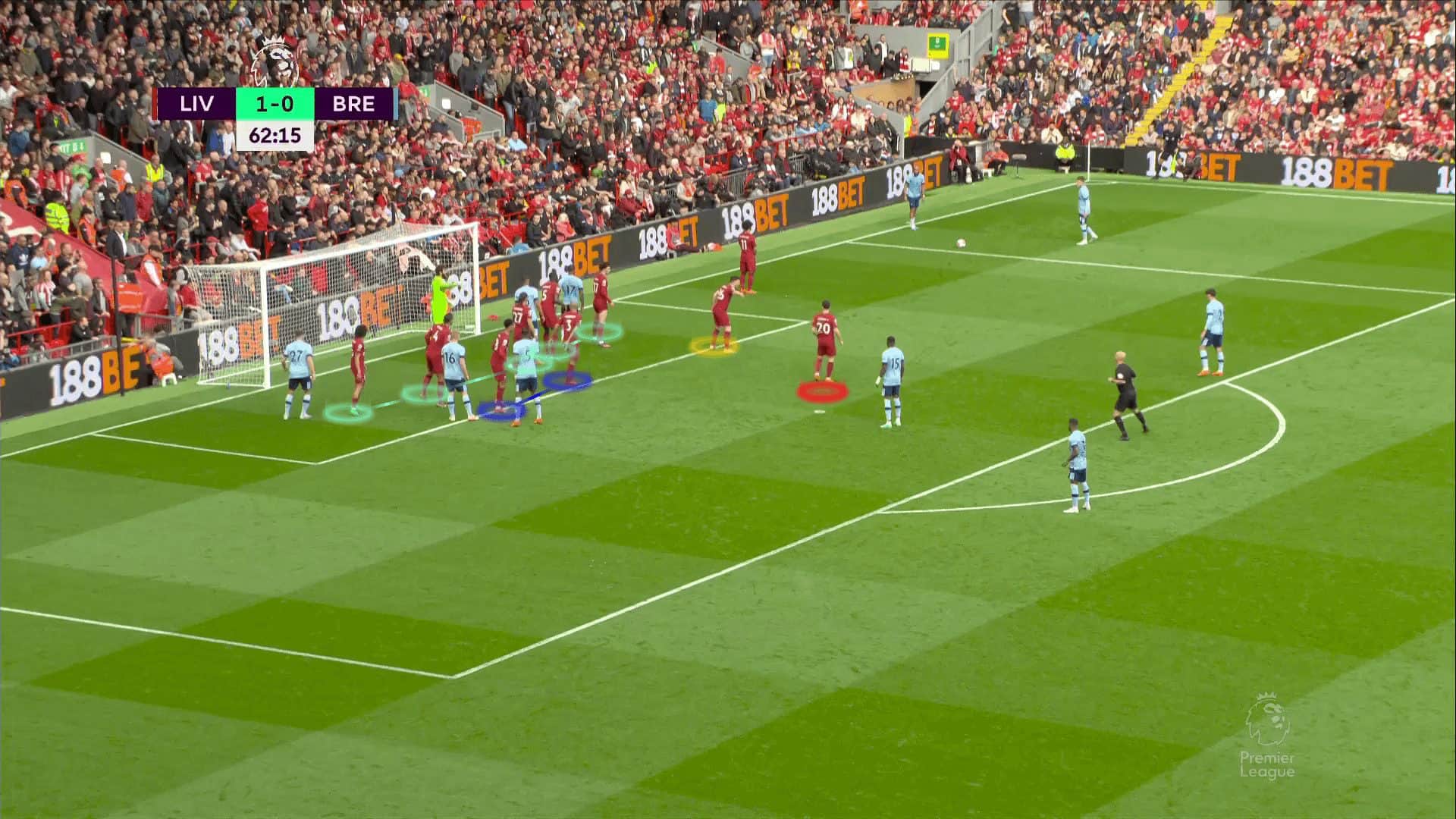
Newcastle United case study
We have another case study, Newcastle United, so let’s know how they dealt with that issue. Newcastle United doesn’t have this second-zone issue because they increase the number of players in the second-zone line as they get closer to the goal because of the same reason we have explained above, which is as the free kick nears the six-yard line, the breach between the line and the rebound widens, so the same player is unable to fulfil these two functions.
In the photo below, this free-kick is before the six-yard, so there is no need to increase the number of second-zone players. They put one player to block runners, a second-zone defender, and a player for the rebound and short options.
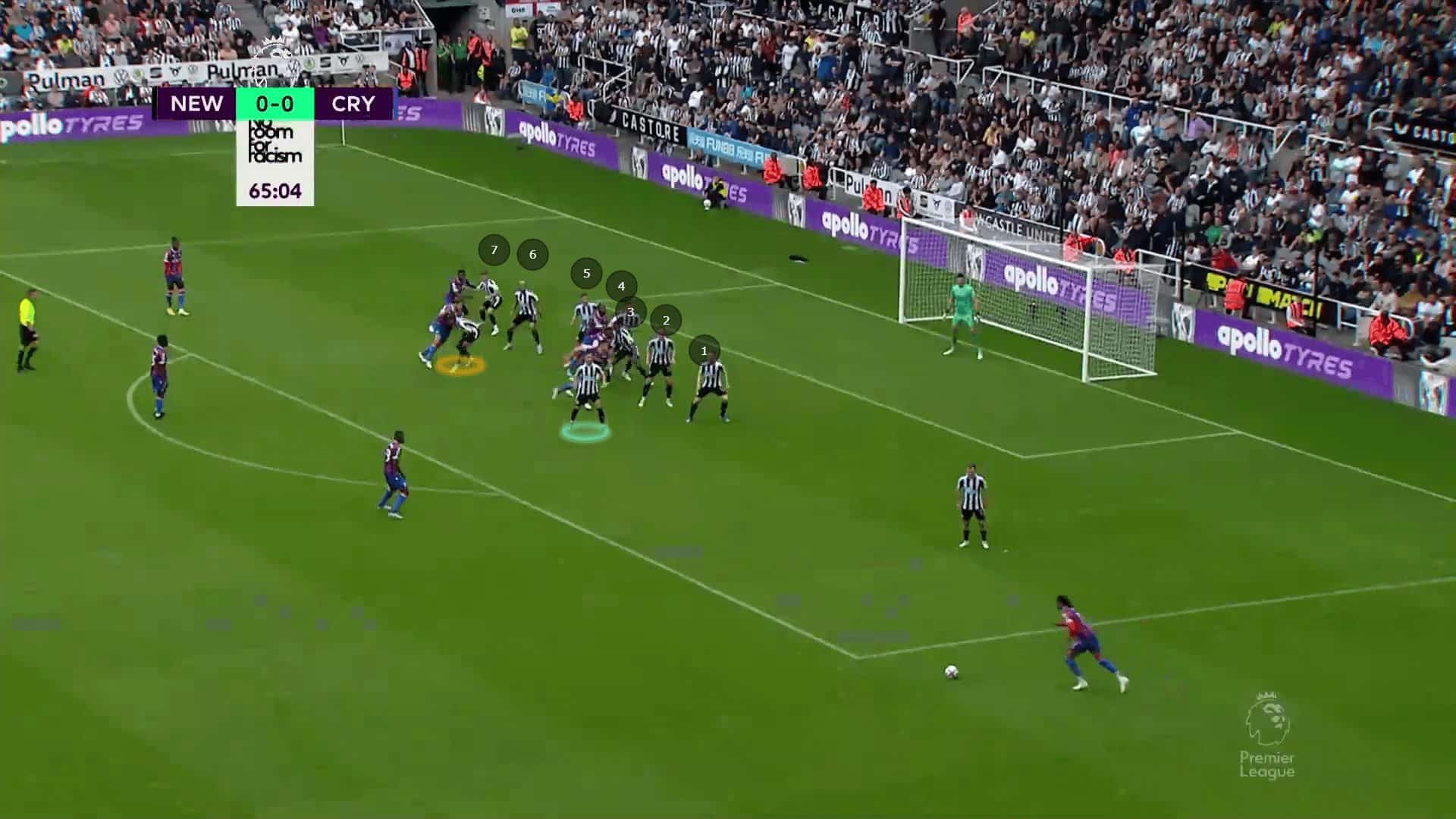
But the free-kick below becomes nearer to the six-yard, so they decrease the number of players in the first zonal line to increase the number of man markers to three, as shown below.
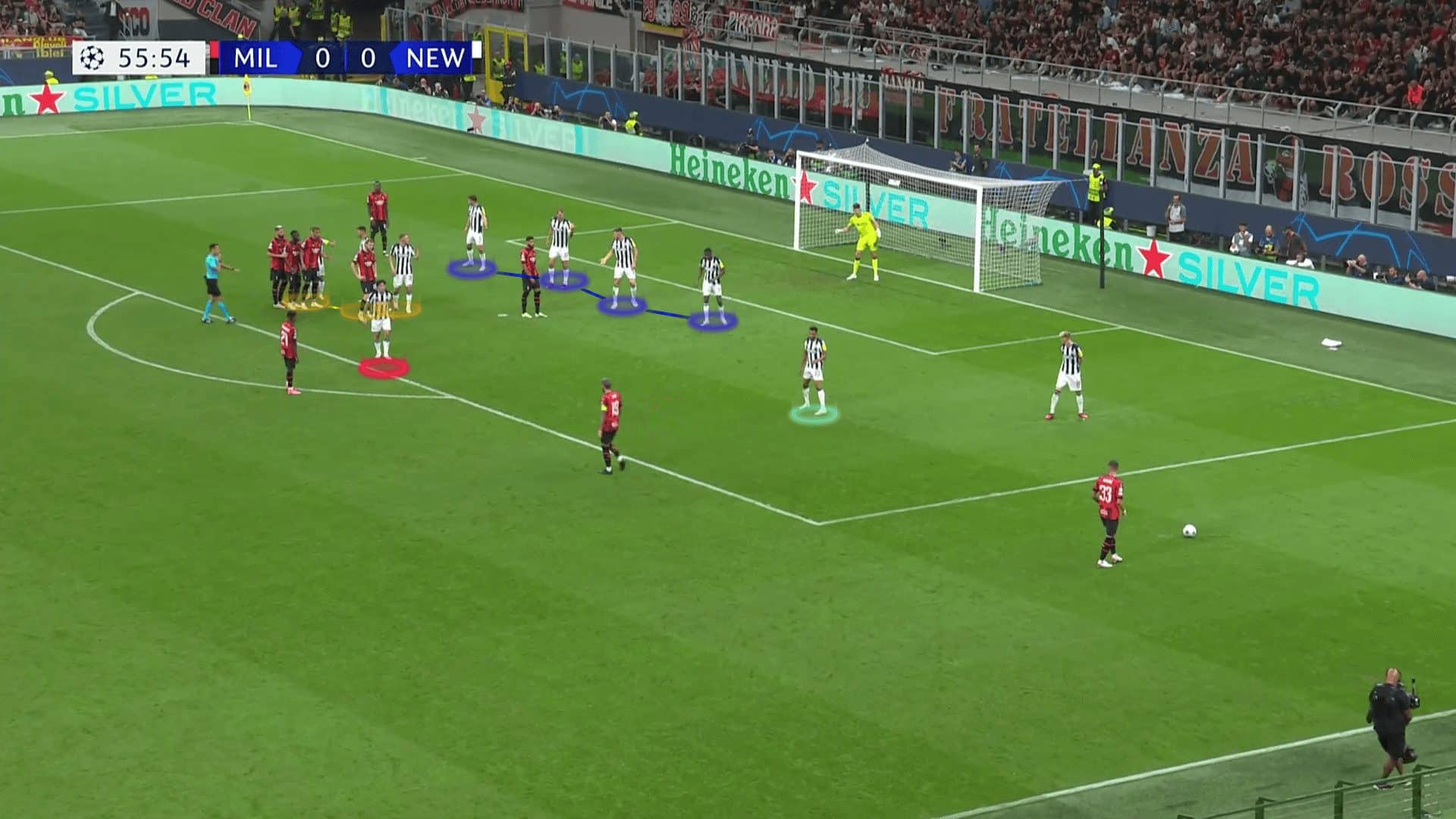
Here, the free-kick is parallel to the six-yard, so the gap becomes larger. They decided to rely on their defending system in corners, which is no longer a zonal system. They defend by a man-marking defending system by using only two yellow zonal players and a rebound player, as shown below.
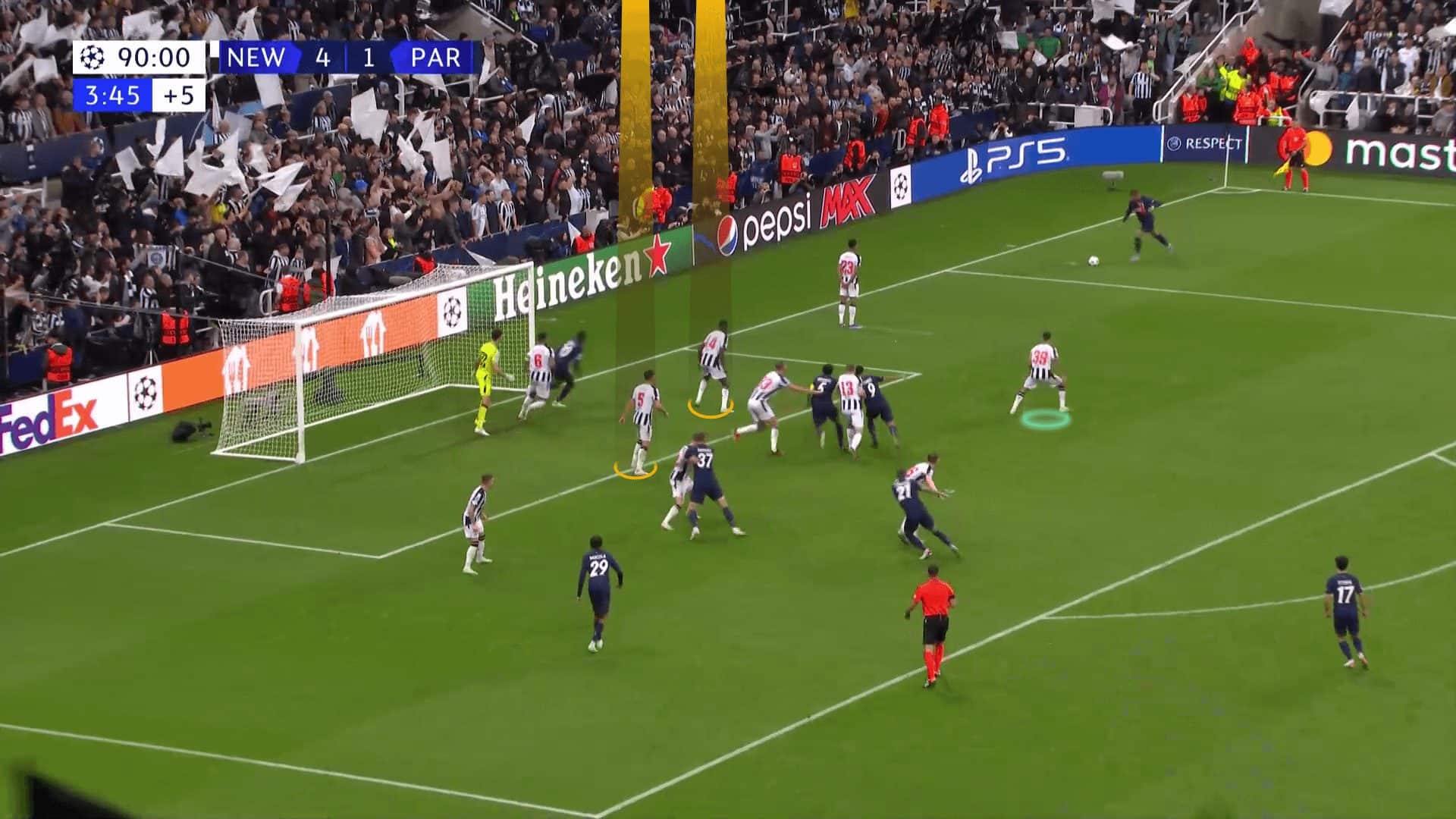
In the case below, it is still the same idea, but the free-kick becomes wider, like a corner, so they only change the positions of the two zonal defenders.
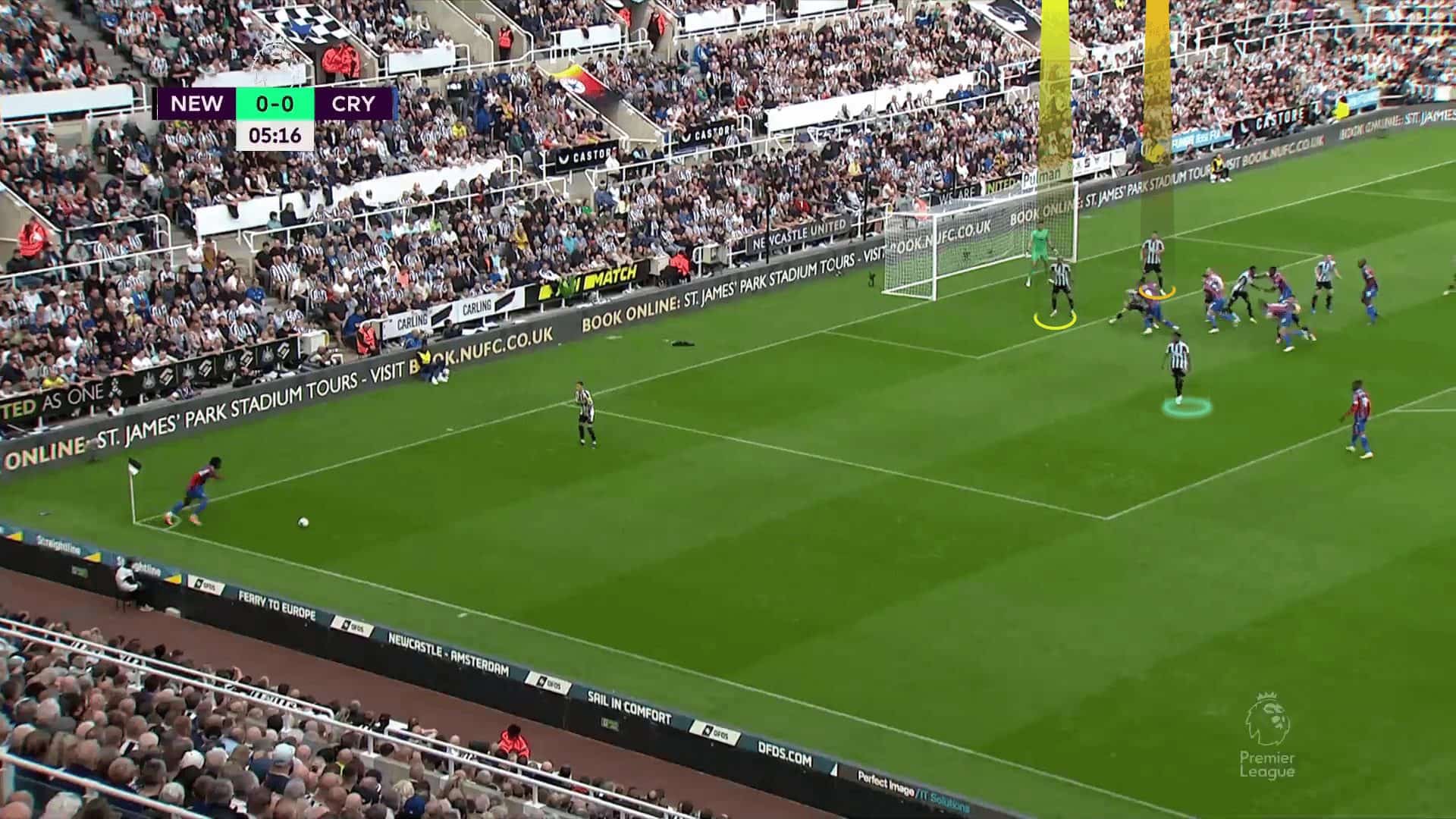
So, it is an excellent defence scheme. Should all teams use it now?!
Football is not like that. Everything has disadvantages, but it relies on your beliefs and your players’ abilities. Therefore, the risks of this system are the same as those of the man-marking system in defending corners but more dangerous because the ball is closer to the goal. You leave the important places around the mouth of the goal without protection, and that means that if any attacker overcomes his defender, it will be disastrous, but it may depend on your players, as we will explain.
In the first photo, Newcastle United defends with a man-marking defending system with only two zonal players: a player in the corner of the six-yard to close the direct path to the goal and get the first touch and a rebound player.
In the second photo, the opponent targets the far post with a high cross, so it is far from the goalkeeper and the zonal defenders. This area isn’t defended by a zonal player, meaning any mismatch between the attacker and the defender results in a goal.
In the third photo, Kurt Zouma pushes his defender to stay at his back, causing an orientation problem to him making it hard for him to track him and the ball at the same time, but the cross is a little high, so it passes Zouma, as in the fourth photo.
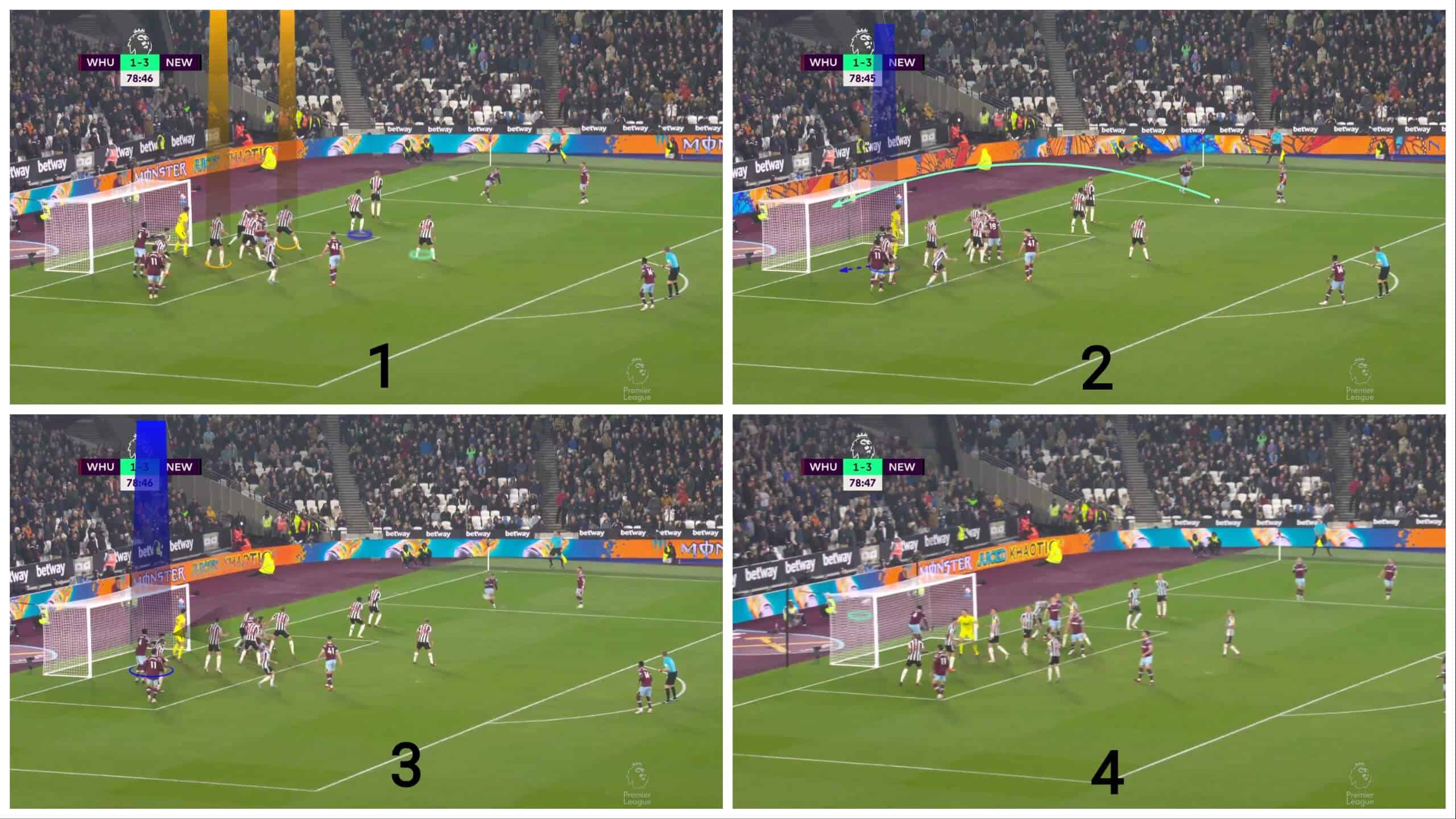
Conclusion
In this analysis, we have explained why teams face many problems when they defend against wide free-kicks beside the box and how they have dealt with that by changing some things in their schemes or by changing the whole system to avoid these problems.
In this set-piece analysis, we have also shown two study cases in the Premier League, Liverpool and Newcastle United, who deal with that in different ways.

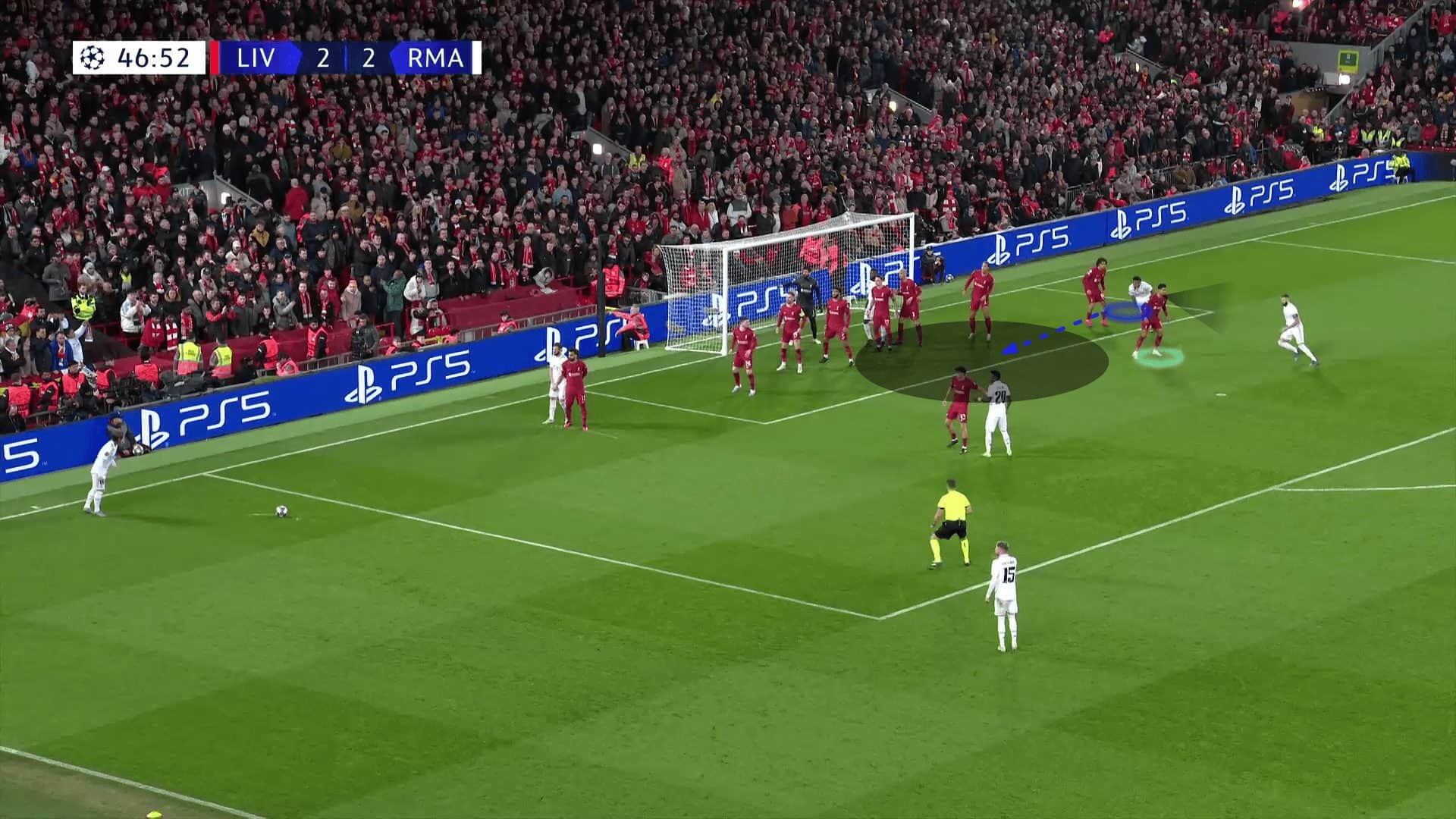




Comments